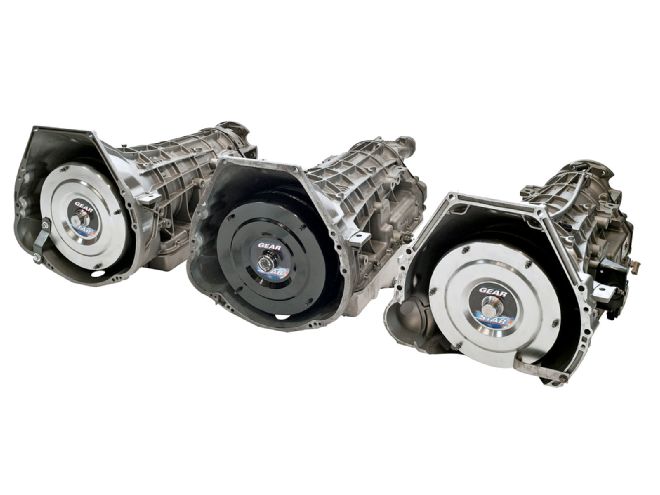
Not since the heyday of the Flathead have Ford engines been as popular in street rods as they are today. Thanks to the performance reputation established by the muscle-bound powerplants, like the Smeding Performance 347 incher under the hood of our Shadow Rods roadster pickup, more and more small-blocks are wearing a Blue Oval instead of a Bow Tie.
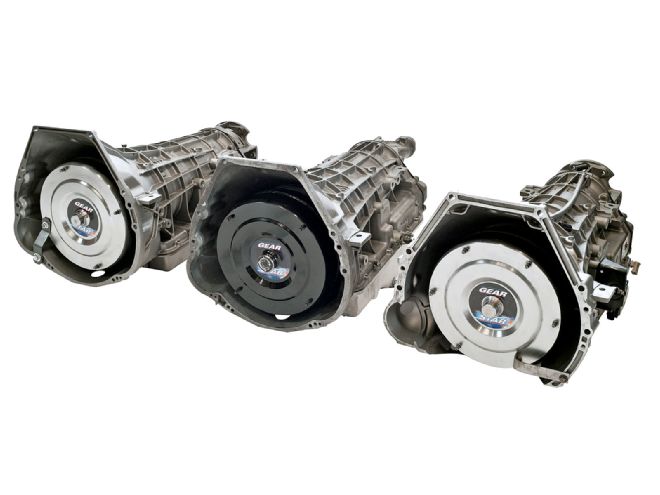 Ford fans needing an overdrive automatic with the utmost in big-block torque and horsepower capacity look no further than Gearstar's lineup of E40D transmissions.
Ford fans needing an overdrive automatic with the utmost in big-block torque and horsepower capacity look no further than Gearstar's lineup of E40D transmissions.
Just as like the evolutionary process the engines have gone through, there have been significant changes in automatics since the days of the two-speed Ford-O-Matic and the contemporary transmissions from Ford are some of the best. To get a handle on the various contemporary gearboxes that are commonly found behind Ford engines, we turned to the experts at Gearstar Performance Transmissions. Here's what they had to say.
For street rod applications there are two categories of Ford transmissions to be aware of: the three-speeds, which include the C4, produced since 1964, and the C6 produced since 1966; and the four-speed overdrives, which we are going to concentrate on, the AOD, AODE, and E4OD.
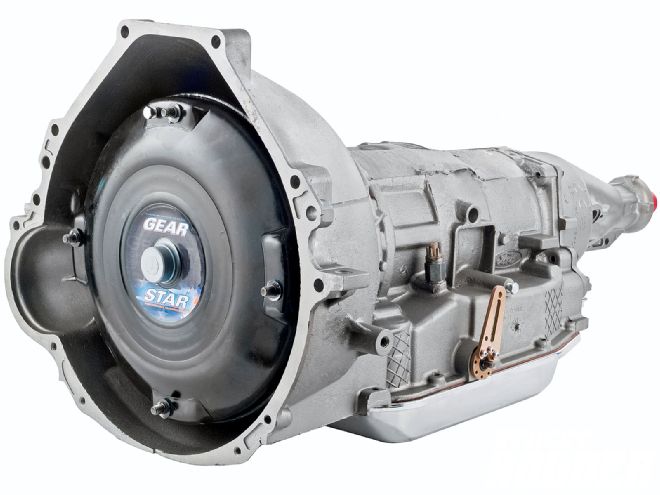 Ford was the first to offer an overdrive automatic transmission with the introduction of the AOD in 1980. One of the advantages to the design is that no computer or electric converter lock-up control is necessary.
Ford was the first to offer an overdrive automatic transmission with the introduction of the AOD in 1980. One of the advantages to the design is that no computer or electric converter lock-up control is necessary.
The C4 and C6 transmissions were known in the '60s and '70s as dependable transmissions that could be modified for Ford-powered cars used on the strip as well as the street. And thanks to better technology, advanced bands and clutches, improved shift kits and the availability of super-hard internal parts, they can be built even better than ever before. Of course the same technology can be applied to the AOD, AODE, and the E4OD overdrive transmissions.
In 1980 Ford introduced the AOD, beating GM to the showrooms with an automatic overdrive transmission by a year. The new four-speed transmission contained basic design elements of the C4 and cast-iron FMX, highly modified and conjoined. Designed to mate up to the 5.0L/302ci engines, the AOD can be easily adapted to the Ford Y-block and the FE series engines. Thanks to high-performance parts and modifications by Gearstar they can meet the demand for a dependable, efficient, high-performance, overdrive transmission for the true Ford believers.
Over the next few years Ford redesigned many internal components to meet increasing demands upon their AOD transmission and in 1992 the AOD became the AODE, electronically controlled transmission. Since then Ford has continued to refine components in the AODE, and many of these updated components will retrofit to the AOD line. Combine the latest generation of Ford factory components with those available from the aftermarket (shift kits, clutches, bands, shafts, drums, and torque converters) and Gearstar has everything to build the perfect AOD or AODE.
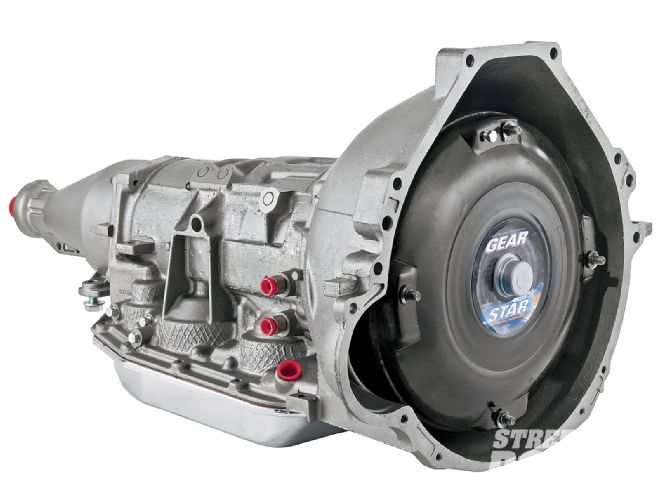 One of the best buys around and perfect for most Ford-powered street rods, Gearstar offers a rebuilt AOD with a host of internal enhancements for $1,595.
One of the best buys around and perfect for most Ford-powered street rods, Gearstar offers a rebuilt AOD with a host of internal enhancements for $1,595.
Although the AOD and AODE are stout transmissions, for high-torque, big-block applications (429, 460, and up) the E4OD is the way to go because with Gearstar's modifications this transmission is capable of handling 800-1,000 hp and all the torque that goes with big-block horsepower.
Based on a highly modified C6, the E4OD is unique in that it has the overdrive component added to the front or input side of the transmission. Since its inception, E4ODs have always been an electronically controlled transmission and require a "stand-alone" computer to control gear changes, shift points (rpm), and shift feel (line measure rise) and Gearstar will supply that as well. In fact, everything you need to get your Ford in overdrive is a phone call away.
The 2010 Amsoil/Street Rodder Road Tour Transmission
For this year's car we chose Gearstar Performance Transmissions' Ford AOD Level IV automatic overdrive transmission with a custom 10-inch, non-damper-style, billet converter with stall speed tailored to the engine's specifications.
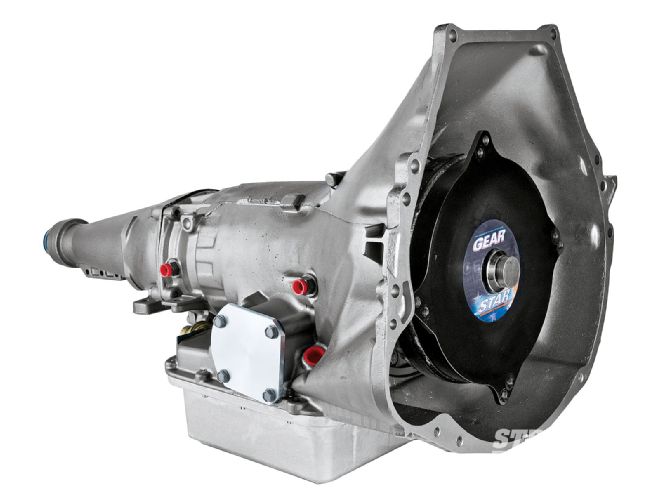 When it comes to automatic transmissions, few have been around as long as Ford's cast-iron Cruise-O-Matic. Introduced in 1958, it morphed into the FMX in 1968 and remained in production until 1980.
When it comes to automatic transmissions, few have been around as long as Ford's cast-iron Cruise-O-Matic. Introduced in 1958, it morphed into the FMX in 1968 and remained in production until 1980.
Based on a stock AOD two-wheel drive short shaft transmission, the first step to Level IV performance begins with qualifying the case, high-pressure washing, and bead blasting. Then the case is rewashed and re-inspected before it goes to be painted. After the case is painted and the internal components are cleaned and thoroughly inspected, a technician gets to work on the custom remanufacturing process.
Reassembly starts with a master overhaul kit with Kolene steels and Raybestos racing frictions. Two valve body reprogramming kits improve shift timing and quality and a high-rpm governor assembly allows for max throttle upshifts at the maximum engine rpm. A complete bushing kit, new Torrington bearings, and new thrust washers are installed. The original equipment clutch drums are modified to accept expanded capacity clutch packs, thus increasing the torque capacity of the transmission.
An extremely critical component is the reverse input drum. Its main function is to provide a friction element by incorporating a one-way roller clutch for Second gear and a friction surface for the fourth overdrive band. Gearstar replaces this drum with the latest generation diode clutch drum, which is superior to the OE seven-roller design. This wider drum allows for a Fourth gear band that is 30 percent wider and is made of a sturdy carbon-fiber material designed to tolerate higher heat and more extreme conditions rather than the original equipment paper lining. Further, the earlier cast-iron input drum is replaced with the late-model stamped steel input drum/shaft, the direct clutch drum is also replaced with the late stamped steel design, which provides a higher capacity clutch pack, the OE direct clutch third shaft is updated with a 300M billet shaft that eliminates any breakage concerns. A new Kevlar low-reverse band designed to tolerate higher heat and has better friction coefficiency is used and the standard Second gear three-disc clutch pack design is updated to a higher capacity four-disc design and a lightweight, high-performance drive shell replaces the heavier, inferior original equipment drive shell reducing internal rotating mass. An expanded capacity billet overdrive racing servo and updated servo apply pin, which engages the overdrive band, are also used. In short, every weak point in these transmissions is addressed to provide years and miles of trouble-free service.
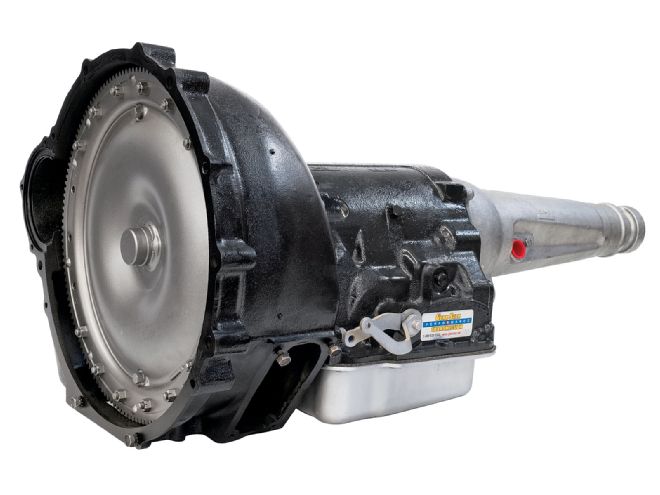 While Gearstar specializes in the latest in transmission technology, they can handle rebuilding many vintage transmissions as well. Note the bolt-together torque converter on this Cruise-O-Matic.
While Gearstar specializes in the latest in transmission technology, they can handle rebuilding many vintage transmissions as well. Note the bolt-together torque converter on this Cruise-O-Matic.
Finally, because of the many various linkage configurations available from Ford, Gearstar Performance uses a Lokar 360-degree adjustable shift linkage assembly. Lokar also provides the throttle pressure signal delivery cable system and an extra capacity cast-aluminum pan is part of the package, although other pans, such as chrome and polished aluminum, are available on request.
Transmission Gear Ratios Transmission First Gear Second Gear Third Gear Fourth Gear C4/C6 2.46 1.46 1.00 - AOD/AODE 2.40 1.47 1.00 0.67 E4OD 2.71 1.54 1.00 0.71Bellhousing Patterns
Over the years Ford engines have used a variety of bellhousing bolt patterns.
Flatheads were early ('32-48) and late ('49-53). Adapters are available to bolt some automatics to late Flatheads.
Y-block is by itself: 239, 256, 272, 292, and 312.
The FE pattern was used on 332, 352, 360, 361 390, 410, 427, and 428.
Early Windsor 221, 260, and early 289 small-blocks used a five-bolt bellhousing bolt pattern.
Late Windsor is a six-bolt pattern and found on 289, 302, 351 Windsor and Cleveland, 240 and 300 six-cylinders and modular engines.
The Lima/385 pattern is found on 351M/400 and 460 blocks.
Transmission Plan Identification